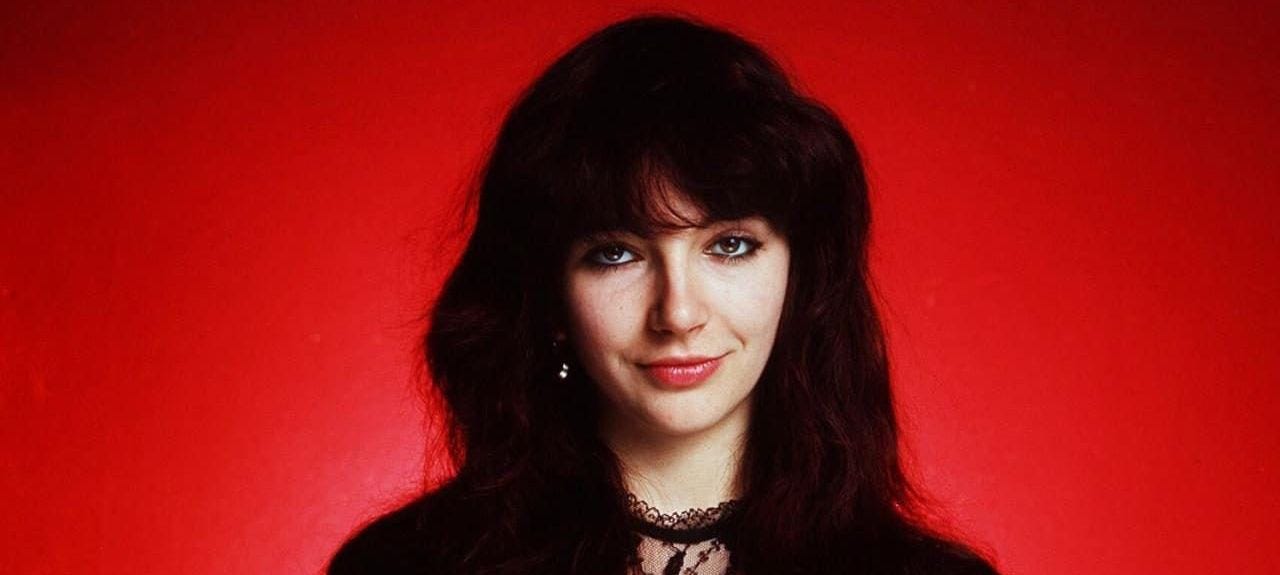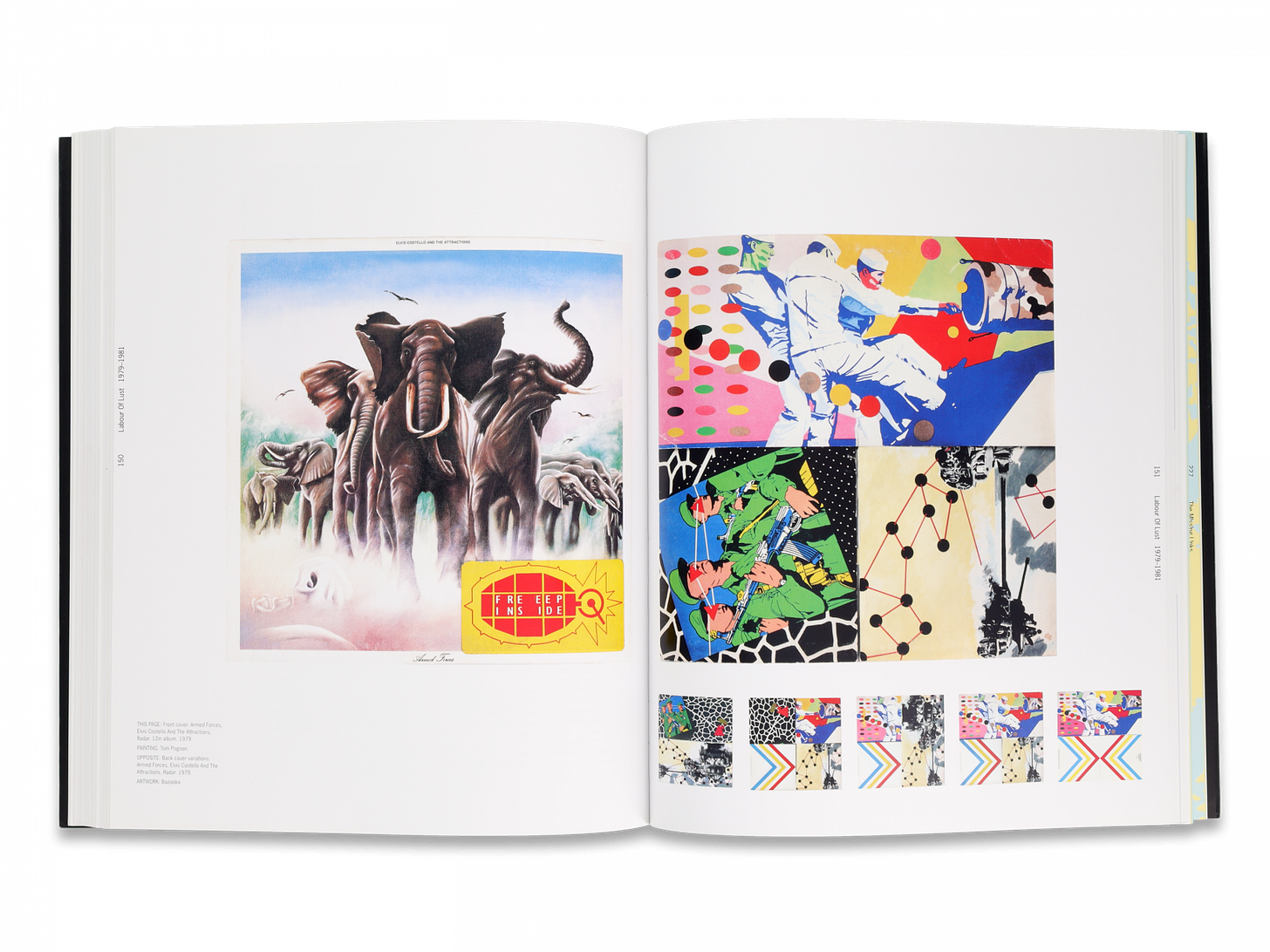Issue three: 'How We Made "The Kick Inside"'
An artist friend once told me that he wanted to make an artwork that included Richard Gere in its list of materials. As I recall, he didn’t want to use a picture or film of the actor, but Gere himself. My friend didn’t know what he’d ask Gere to do. But he knew he was after an atmosphere, an ineffable quality. The Richard Gere-ness of Richard Gere. Associations that could open up a conversation about something deeper. My friend had no one backing him, no money, reputation, or access to the machinery of access. The work would never get made but this was not a problem. The rumour and potential was key. It hinged on Gere never turning up. Like Godot, in Armani.
How We Made ‘The Kick Inside’ is a short new book by British artist Paul Becker. It imagines Kate Bush and her producer Andrew Powell talking about the singer’s confident, inventive 1978 debut album The Kick Inside, released when she was just 19 years old. Like my friend’s idea to install Richard Gere in a London gallery, the charm of the book depends on the absence of its star. At first glance, How We Made ‘The Kick Inside’ reads like the transcript of a music documentary. You can picture Bush and Powell sat next to a large mixing desk in a plush, softly lit recording studio. Publicists and management just off camera. The gentle rustle of laurels being rested on. The pair switch back and forth, discussing the ideas behind the album, the singer’s vision, the recording process. But within a page or two it becomes clear that neither Kate Bush nor Andrew Powell have turned up for this doc at all. Here, Kate Bush is a mood, a chord loosely synthesized from archival interviews, and conversations Becker has had over the years with many artists and writers about the nature of creativity. “Kate” is proxy for old questions. What can be known of someone else’s interiority? What is creative influence? How do age and gender construct a work of art? Can the creative process ever adequately be described, and if so, is doing so as pointless as trying to explain a joke?
Early in the book, the character of Kate recounts a childhood memory of going to a cèilidh, and observing the way in which the dancer’s limbs looked as if they were moving independently from one another, “as though whatever may be happening from the waist down is really not the torso’s concern.” Throughout, there are repeated allusions to puppetry, to Mr Punch, and to mannequins. Kate sometimes speaks as her younger self, at other times as if looking back from retirement. Time wobbles sentence by sentence: “It goes without saying that this was another person entirely. I am not the sort of character who is going to look back on my youth with ironic detachment or cynicism.” The names of influential artists drift through the ether: Hildegaard of Bingen, Robert Bresson, Giotto, James Joyce, Clarice Lispector, Michael Powell and Emeric Pressburger, Odilon Redon. The writing in How We Made ‘The Kick Inside’ is rough hewn, destabilizing the book’s conceit. This works in the book’s favour. It feels as if Becker is trying to tune a radio and never fnding the perfect signal. Other voices keep interfering, the anxious sounds of influence.
Andrew and Kate talk relatively little about making music and song. Andrew provides commentary about the album’s production, but slowly recedes from view as the book progresses. Kate’s own recollections of the recording process seem pulled from a dream. “I would strip off conduit and rip out copper wires from all the leads. I began to disembowel the mixing desk, pulling out its entrails: green, white, red, brown leads. I fixed all the wrong type of wiring to the wrong type of power and would turn the whole system on to see what happened.” The “how” of the book’s title is not important, “and yet,” says Kate, “the reason the question of How? remains such a constant and why it is something artists are always asked is, I guess, understandable.” She continues:
I know people love it, find it really fascinating. You know, it’s like George Martin talking about producing the Beatles at Abbey Road. “Oh, on this part we used this many tracks and I put this effect on John’s Rickenbacker…” or whatever. In hearing about the minutiae, the details of how things were technically achieved not only do we feel we are being given the recondite details of some secret wizard’s trick, we are also vicariously present within the magic itself. Yet the enduring power of form over content is entrenched so firmly quite simply because none of us have enough language to meet the demands of the Why? That question is too much of a bummer. We are not, any of us, trained to talk in terms of what cannot be identified, only what can be fully named and, you know, accurately detailed.
Eventually the interview evaporates. For the second half of the book, Kate tells a story about a giant wooden effigy of herself that had been built for a music video and moved to her home. “It was a Kate Bush as high as three houses, made in sections. I was dressed in a raincoat and a hat, like Humphrey Bogart hahah! It was too much hassle to trash so I ended up keeping it and as a joke my husband had it secretly reassembled for our anniversary in the field behind our house.” Kate climbs inside the structure but becomes stuck, unable to escape. Eventually she finds her way into a vast cave system beneath the effigy, and embarks on a long, psychedelic voyage. Kate tries to describe an emotional experience of making art; the struggles, successes, periods of self-doubt, reflection, inspiration, self-reference, self-indulgence, selfishness, futility, disappointment, satisfaction and pleasure.
All artists use other artist’s work as material, to some degree, whether they know it or not. When the psychological, emotional residue of an art work or sensibility becomes internalized, perhaps without recognizing it, that’s influence. It hides within and becomes a part of you. “Take an object. Do something to it. Do something else to it,” said Jasper Johns. The problem is with those content to stop at the second sentence, when using their imagination to get to sentence three should be the goal. If you’re going to follow his advice, then the sweet spot lies between how much you take and how much you make. Yet there are some artists whose work is so inimitable that their work should be left alone, no matter how tempting it is to take and make from it. You may want it, but it does not want you. Kate Bush is one of those. There is something unassailable about her music. A cover version of Wuthering Heights can never reach beyond homage, or the novelty of transposing it from one genre to another. Kate Bush is already sui generis. Her anthemic 1984 song Running Up that Hill (A Deal With God)—there is an existential dread in that title I’ve always loved—has been made a hit all over again this summer, thanks to its use in the latest season of the Netflix sci-fi show-cum-1980s-jukebox Stranger Things. The scene in which it’s used openly draws its power from the song more than its own dramatic qualities, literally so: the character of Max is able to pull herself free of a demonic underworld by hearing Running Up that Hill on her Walkman.
Becker sees How We Made ‘The Kick Inside’ as an experiment in ekphrasis and camouflage, hiding one work inside a description of another. Alongside this book, he has been working on a long-term collective fiction project, a novel titled The Kink in the Arc. He invites an artist or writer to describe an artwork of their choosing, and then places their text within the novel’s story, which is set in “a sanatorium for the weary of image.” (I contributed a short piece based on Edward Burra’s 1930 painting The Snack Bar.) How We Made ‘The Kick Inside’ isn’t a work of group writing, but the we and made of its title certainly belong to the reader. The question it poses is how do we, the audience, make of a piece of work? How do we make music, art, books, a part of our lives and a part of history? (It’s tempting to wring further meanings about creativity and inspiration from the phrase “the kick inside” too, but Bush was inspired to write that song by ‘Lizie Wan,’ an English folk ballad about incest and murder. I’m not sure whether its subject matter makes the metaphor for art-making more or less appropriate.)
The publisher’s blurb describes How We Made… as “a fictional inhabiting,” which makes the book sound less raw and interesting than it is. In other contexts, outside the art world, it might simply be replaced with the term fiction. (And if this “inhabiting” is fictional, what would a real one be? Identity fraud? Supernatural possession?) Becker has found a way to hide an hallucinatory description of the artistic process inside a Kate Bush documentary. (It may not even need the Kate Bush part—she can look after herself.) The result is a rapturous, peculiar fantasy, a confessional about the psychological experience of making things.
RECOMMENDATIONS
Hydration, proximity to a sea or lake, plus:
The Wild World of Barney Bubbles: Graphic Design & The Art of Music by Paul Gorman covers the life and work of designer Barney Bubbles. His career—and troubled life—took him from the 1960s underground press, to furniture design for Terence Conran and record covers for musicians including Hawkwind, Elvis Costello, Depeche Mode and Ian Dury. Also, I was surprised to learn, the logo for Strongbow cider. Originally published by Adelita in 2008 as Reasons To Be Cheerful, the book has been revised, expanded and given a makeover this summer by Thames and Hudson. Bubbles here.
I’m currently reading Mervyn Peake’s comic-gothic fantasy Titus Groan, work of astonishing invention and irony. It is vast, “aggressively three-dimensional” as Anthony Burgess put it, and also a little like The Addams Family crossed with P.G. Wodehouse. The book reminds me that if I were in London I would go to Studio Voltaire to see the exhibition of work by Maeve Gilmore—painter, illustrator, writer, and Peake’s wife—the first ever institutional show of her work.
Years ago, while researching my book Limbo, a friend told me about Athens GA: Inside/Out, a low-budget documentary made by Tony Gayton in 1986 about the Athens, Georgia music scene. The recommended came because the film included footage of the scene’s long, lost band Limbo District, but it also features interviews and performances from REM, The B-52s, Pylon, and other local artists, poets, playwrights and chefs. For no reason I can identify, I thought about it this week. Long clip here. Whole deal and its sequel can be streamed here.


